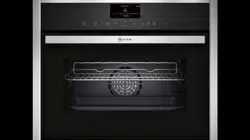Documents for Neff C17FS32H0B
The following documents are available:
User Manual
User Manual
- User Manual - (English) Read Online | Download pdf
- Product spec sheet - (English) Download
- EU Declaration of Confirmity - (English) Download
- Photos: View Photos

